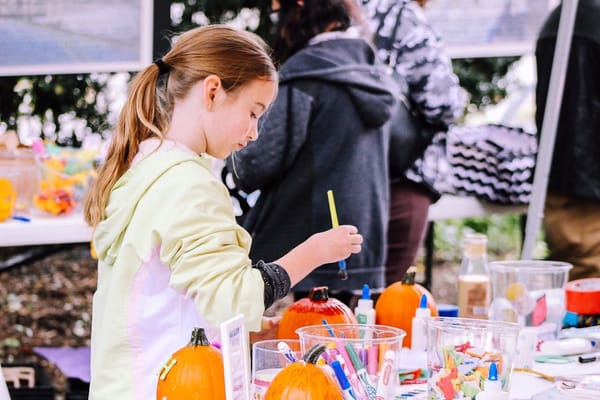Finished Homeschooling? Here’s How to Organize, Donate, and Sell Your Homeschool Books and Materials

Homeschooling is such a unique journey, filled with milestones, memories, and mountains of books and materials collected along the way. If you’re nearing the end of your homeschooling adventure — you might be wondering, “What on earth do I do with all these homeschool books and materials?”
We get it. After years of gathering curriculum, manipulatives, art supplies, and notebooks, it can feel overwhelming to decide how to part with it all. But don’t worry! You’re not alone, and there are many meaningful, practical, and manageable ways to let go of your homeschool treasures while honoring all the hard work and memories tied to them.
In this post, we’ll explore thoughtful ideas for what to do with your homeschool books and materials when you finish homeschooling. Whether you want to sell, donate, preserve, or repurpose your resources, you’ll find helpful suggestions to ease this transition.

Why It’s Okay to Let Go of Homeschool Materials
First, a little heart-to-heart. Homeschooling creates a deep connection to your books, manipulatives, and supplies. They are part of your family’s story — from the first ABCs to science experiments and history projects. But it’s important to remember that these items don’t hold your homeschool journey; you do.
Letting go of your homeschool materials can be freeing, making space in your home and mind for the next chapter. Plus, passing those resources along to another family can help extend the gift of homeschooling beyond your own experience.
Step 1: Take Inventory and Organize
Before deciding what to keep, donate, sell, or toss, start by taking a thorough inventory of your homeschool materials. Organize them into categories:
- Books: Textbooks, workbooks, readers, literature
- Supplies: Art materials, manipulatives, science kits
- Curriculum: Teacher’s guides, DVDs, online subscriptions (note access expiration)
- Completed Work: Portfolios, notebooks, projects, tests
- Miscellaneous: Furniture, storage bins, tech devices
This step helps you visualize what you have and decide what you want to do with each category. As you sort, ask yourself:
- Will I need to reference this in the future (for younger siblings, tutoring, etc.)?
- Does this item hold sentimental value?
- Is it in good enough condition to donate or sell?
- Will it help someone else start or continue homeschooling?

Step 2: Decide What to Keep and What to Let Go
Keep What’s Useful or Sentimental
Some materials might be worth keeping:
- Books or curriculum for younger siblings or future use
- Sentimental items like hand-made notebooks, projects, or journals
- Special resources you can repurpose in family learning or personal development
Try to limit what you keep to avoid clutter down the road. If you’re unsure, box things up and revisit after a month or two.
Step 3: How to Meaningfully Part with Your Homeschool Materials
1. Donate to Other Homeschool Families or Local Groups
Many homeschool families are always on the lookout for affordable curriculum and supplies. Here are ways to donate:
- Local Homeschool Co-ops: Many co-ops have lending libraries or free curriculum swaps.
- Community Centers and Libraries: Ask if they accept homeschool materials for lending or programs.
- Charity Thrift Stores: Some accept educational materials in good condition.
- Online Facebook Groups or Marketplaces: Search local homeschooling groups and offer materials for free or at low cost.
- Nonprofits or Educational Outreach Programs: Organizations that work with underserved children may welcome donations.
When donating, make sure materials are clean, complete, and usable.

2. Sell Your Homeschool Books and Curriculum
If you want to recoup some of your investment, selling your materials can be a great option.
- Online Marketplaces: Amazon (used books), eBay, Facebook Marketplace, Craigslist
- Homeschool Buy/Sell/Trade Groups: Look for groups specifically dedicated to homeschool curriculum.
- Local Yard Sales or Homeschool Consignment Sales: These events are popular in many communities.
Tips for selling:
- Price fairly by researching similar listings.
- Bundle materials to sell as sets.
- Be honest about condition.
- Include clear photos and detailed descriptions.
3. Repurpose and Reuse Homeschool Materials
Get creative by repurposing some of your supplies:
- Use old textbooks or workbooks for art projects or collages.
- Turn completed notebooks or journals into memory books.
- Reuse manipulatives and craft supplies for future family activities.
- Create a “learning shelf” with favorite read-alouds and games for ongoing casual learning.
- Donate materials to local daycare centers or afterschool programs for enrichment.

4. Preserve Special Memories
While many materials can be passed on or sold, some items are worth preserving:
- Keep a small box or binder of your children’s favorite work, projects, and journals.
- Create a photo book or scrapbook highlighting your homeschool journey.
- Digitize papers and projects to save space and keep memories intact.
Preserving memories lets you look back with pride without keeping every physical item.
Step 4: Make the Process Manageable and Meaningful
Letting go of homeschool materials can feel emotional and overwhelming, so here are a few tips to keep the process manageable:
- Set Realistic Goals: Break the task into small chunks — one category at a time or one box per day.
- Include Your Kids: Make it a family activity. Let kids choose what to keep or give away.
- Create a Goodbye Ritual: Celebrate the homeschool journey with a special “goodbye” day for your materials. Share stories, take pictures, or hold a little ceremony.
- Stay Organized: Use clear bins, labels, and a system for sorting items to donate, sell, keep, or recycle.
- Ask for Help: If you’re feeling overwhelmed, recruit a friend or fellow homeschool mom.
Step 5: Look Ahead with Excitement
Parting with homeschool materials signals a new chapter — whether your kids are heading off to college, pursuing vocational paths, or exploring new learning opportunities.
Keep your homeschool spirit alive by:
- Reflecting on all you’ve accomplished.
- Staying connected with homeschool communities.
- Continuing to support your children’s learning in fresh ways.

Final Thoughts
Deciding what to do with your homeschool books and materials when you finish homeschooling can feel like a big task, but it’s also a wonderful opportunity to honor your journey, declutter your space, and help other families along the way. Whether you choose to donate, sell, preserve, or repurpose, remember this: the most important lessons and memories live on in your family, not on the shelves.
We hope these ideas help you find peace and joy in this transition. You’ve done amazing work — now it’s time to celebrate and move forward with confidence!
If you found this post helpful, please share it with fellow homeschool moms who might be wondering the same thing! And if you’re looking for practical homeschool resources to simplify your journey, check out The Lively Bean’s printables and tools designed just for busy homeschool moms like you.
Happy homeschooling (and happy organizing)!
Have you recently finished homeschooling? What did you do with your materials? Share your tips and stories in the comments below!


